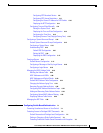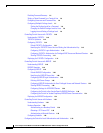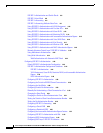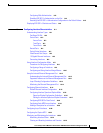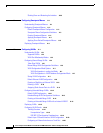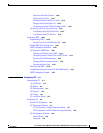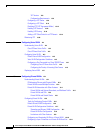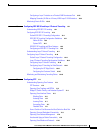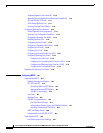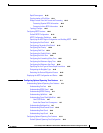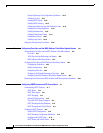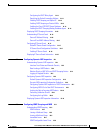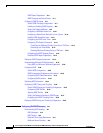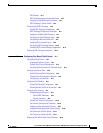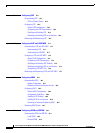
Contents
xv
Cisco Catalyst Switch Module 3110 and 3012 for IBM BladeCenter Software Configuration Guide
OL-12189-01
Configuring a Layer 2 Interface as a Private-VLAN Promiscuous Port 15-13
Mapping Secondary VLANs to a Primary VLAN Layer 3 VLAN Interface 15-14
Monitoring Private VLANs 15-15
CHAPTER
16 Configuring IEEE 802.1Q and Layer 2 Protocol Tunneling 16-1
Understanding IEEE 802.1Q Tunneling 16-1
Configuring IEEE 802.1Q Tunneling 16-4
Default IEEE 802.1Q Tunneling Configuration 16-4
IEEE 802.1Q Tunneling Configuration Guidelines 16-4
Native VLANs 16-4
System MTU 16-5
IEEE 802.1Q Tunneling and Other Features 16-6
Configuring an IEEE 802.1Q Tunneling Port 16-6
Understanding Layer 2 Protocol Tunneling 16-7
Configuring Layer 2 Protocol Tunneling 16-10
Default Layer 2 Protocol Tunneling Configuration 16-11
Layer 2 Protocol Tunneling Configuration Guidelines 16-12
Configuring Layer 2 Protocol Tunneling 16-13
Configuring Layer 2 Tunneling for EtherChannels 16-14
Configuring the SP Edge Switch 16-14
Configuring the Customer Switch 16-16
Monitoring and Maintaining Tunneling Status 16-18
CHAPTER
17 Configuring STP 17-1
Understanding Spanning-Tree Features 17-1
STP Overview 17-2
Spanning-Tree Topology and BPDUs 17-3
Bridge ID, Switch Priority, and Extended System ID 17-4
Spanning-Tree Interface States 17-5
Blocking State 17-6
Listening State 17-7
Learning State 17-7
Forwarding State 17-7
Disabled State 17-7
How a Switch or Port Becomes the Root Switch or Root Port 17-8
Spanning Tree and Redundant Connectivity 17-8
Spanning-Tree Address Management 17-9
Accelerated Aging to Retain Connectivity 17-9
Spanning-Tree Modes and Protocols 17-10



